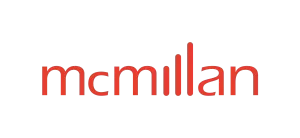- in United States
- within Government and Public Sector topic(s)
- with Finance and Tax Executives
- in United States
- with readers working within the Accounting & Consultancy, Banking & Credit and Insurance industries
On May 15, 2025, Ontario's Finance Minister, Peter Bethlenfalvy, released Ontario's 2025 budget entitled, "A Plan to Protect Ontario" (Budget). Of note to participants in the infrastructure sector, the Budget makes it clear that the follow-on economic effects of near-term spending on infrastructure by government are a core element of the Province's plan to protect Ontarians against economic uncertainty.
To that end, the Budget sets out a 10-year, $200 plus billion plan to build infrastructure, including over $33 billion in 2025–26. Specifically, the Budget provides for investments of $30 billion in highways, $61 billion for transit, $56 billion for hospitals and healthcare, $35 billion in education and child care, with the remaining funding allocated to other sectors including social, justice, high-speed internet infrastructure, government administration, natural resources, and culture and tourism.
Critical Minerals and the Ring of Fire
While not specifically called out with discrete development dollars, the Budget emphasizes the strategic importance of developing the Ring of Fire region as a source of chromite, copper, cobalt, nickel, platinum and other critical minerals that each play a significant role in the electronics, EV and cleantech industries.
As improving access to roads will be critical to developing the region, the Budget confirms that agreements are now in place to build roads along the entire route to the Ring of Fire, and indicates a desire on the part of government to make all-season and dependable road access a reality. Commitments to enhance telecommunications and broadband infrastructure, as well as energy transmission are also included.
Indigenous Funding Reboot
A significant initiative in the Budget is the metamorphosis of the Province's existing $1 billion Aboriginal Loan Guarantee Program into the $3 billion Indigenous Opportunities Financing Program (IOFP). The IOFP will now support Indigenous participation in a broader array of areas, including electricity, pipelines, mining, critical minerals, resource development and related infrastructure components. Oversight and administration of the IOFP will be transferred from the Ontario Financing Authority (OFA) to the Building Ontario Fund (BOF) in Q2 of the 2025–26 fiscal year.
The Budget announces an investment of $70 million over four years in the Indigenous Participation Fund (formerly known as the Aboriginal Participation Fund) in the area of critical minerals specifically, starting in 2025–26.
Transit Infrastructure
Ontario commits $61 billion over 10 years to transit infrastructure, focusing on the Province's ongoing subway program, headlined by the Ontario Line, the Scarborough Subway Extension, the Eglinton Crosstown West Extension and the Yonge North Subway Extension, all of which are currently already at the procurement or construction stages, as well as a proposed Sheppard Subway Extension which is currently in the planning stages. In terms of major capital allocation to legacy systems, the budget also includes $758 million to help the Toronto Transit Commission (TTC) purchase 55 new trains for Toronto's Line 2 subway.
The Budget also affirms Ontario's commitment to Light Rail Transit (LRT) projects currently under construction, including the Hamilton LRT, the Hazel McCallion Line (Hurontario LRT), Eglinton Crosstown and Finch West LRT. Additionally, the Budget discloses that the government will also be exploring options for uploading the Ottawa LRT, subject to due diligence.
In terms of the GO Transit network, the Budget includes funding for feasibility studies for GO 2.0, intended to be a transformational expansion of GO train service, as well as $850 million to refurbish GO Transit rail cars.
Other investments including reinstating the Northlander, to provide enhanced transportation options between Northern Ontario and Toronto, as well as constructing the East Harbour Transit Hub in Toronto.
Highway, Road and Bridge Infrastructure
The Budget highlights the Province's highway, road and bridge infrastructure program, which include various previously announced expansion projects across Ontario such as Highway 413 (a new 400-series highway and transportation corridor across Halton, Peel and York Regions), the Bradford Bypass (a new four-lane freeway connecting Highway 400 in Simcoe County and Highway 404 in York Region), and the Queen Elizabeth Way (QEW) Garden City Skyway Bridge Twinning project. Also included are various enhancement, rehabilitation and widening projects across the Province and progress on the uploads of the Gardiner Expressway and Don Valley Parkway by the City of Toronto to the Province.
Notably, the Budget also provides funding for certain feasibility work for a tunneled expressway under Highway 401 in the City of Toronto to help relieve gridlock.
Outside of the Province's major road systems, the Budget also provides support for building and improvement of highway infrastructure through partnerships with Animbiigoo Zaagi'igan Anishinaabek, Aroland First Nation, Ginoogaming First Nation and Long Lake #58 First Nation in order to connect more First Nation communities to the Province's highway network.
Of note, the Budget document also announces that effective June 1, 2025, the government will permanently remove tolls from the provincially owned Highway 407 East. This is the last stretch of provincially owned tolled highway in Ontario and follows the government's previous removal of tolls from Highways 412 and 418, and recent legislation prohibiting the establishment of any new road tolls on any public roadway in Ontario.
Housing-Enabling Infrastructure
To support housing-enabling infrastructure, Ontario will invest $2.3 billion over four years. Program highlights include:
- The Housing-Enabling Water Systems Fund (HEWSF) – Nearly $1.3 billion will be provided to maintain and expand drinking water, wastewater, and stormwater infrastructure. To date, the government has approved 77 projects across the first two intakes, supporting the delivery of an estimated 600,000 new homes.
- The Municipal Housing Infrastructure Program – Core Servicing Stream – A further $400 million is allocated to 60 municipalities to fund 58 projects that will enable the development of up to 160,000 new homes. These projects focus on core servicing infrastructure, including roadways and utilities essential for community growth.
- The Municipal Housing Infrastructure Program – Health and Safety Water Stream – An additional $175 million will support projects ensuring access to safe drinking water, reliable wastewater services, and improved resilience against extreme weather events.
Healthcare Infrastructure
The Province plans to invest more than $43 billion over 10 years to build new and expanded hospital infrastructure across Ontario, including investment in significant expansions at William Osler Health System – Peel Memorial Hospital as well as North York General Hospital – Inpatient Redevelopment Project.
Additionally, funding is provided for the planning of new hospitals at Campbellford and Orillia, as well as investments in the existing Timmins and District Hospital emergency department, the Runnymede Healthcare Centre Post-Traumatic Stress Injury Centre of Excellence, and the University Health Network's West Park Reactivation Care Centre.
Long-Term Care Infrastructure
The Budget reaffirms plans to build 58,000 new and upgraded long-term care beds by 2028, adhering to modern design standards. The government will introduce new financing tools for the sector, supported by the BOF.
Education Infrastructure
In the education sector, the Budget includes investments of $23 billion in capital grants over 10 years to build and renew schools and child care spaces. Projects specifically referenced in the budget include new elementary schools in Sudbury, Stouffville and Ottawa, an addition to Northwood Public Elementary School in Windsor, a new elementary and secondary school in Newcastle and a new English public secondary school in Oshawa.
In terms of postsecondary education infrastructure, the Budget sees the Province investing more than $5 billion over the next 10 years, including over $2 billion in capital grants to help colleges, universities and Indigenous Institutes modernize facilities by upgrading technology, supporting critical repairs and improving energy efficiency.
Electricity and Renewables
In response to a projected 75% increase in electricity demand by 2050, the Budget highlights a series of major initiatives to enhance the Province's clean energy capacity and support future electricity demand.
The Budget confirms that the Province's competitive energy procurement process is expanding from the previously announced 5,000 MW to 7,500 MW. The expanded procurement will be open to a range of technologies, including hydroelectric, natural gas, energy storage, wind, and solar.
Targeting hydro expansion, Ontario Power Generation (OPG) will lead a $4.7 billion refurbishment and expansion of hydroelectric generating stations across the Province. This investment is expected to secure up to 5,000 MW of clean electricity.
In the energy storage space, the Budget confirms that pre-development work is moving forward on the proposed Ontario Pumped Storage Project (a joint initiative between TC Energy and the Saugeen Ojibway Nation). When constructed, the project would become Canada's largest energy storage facility.
Building upon Ontario's previously announced small modular reactor program, the Budget affirms support for further investments in nuclear technology, also noting that the Province is exploring both new nuclear energy generation opportunities as well as projects focused on extending the life of existing nuclear operations.
Beyond the above-referenced technologies, the Budget confirms that hydrogen may also have a role to play in Ontario's future energy mix. The Province is advancing the integration of hydrogen through projects like Enbridge's Markham Hydrogen Demonstration Project—the first utility-scale hydrogen blending initiative in North America. In support of further innovation, the government is launching a new round of the Hydrogen Innovation Fund, with $30 million to support hydrogen applications across electricity, transportation, and other sectors. Eligibility criteria are also being broadened to include both grid-focused and cross-sector initiatives.
Building Ontario Fund
The Budget introduces significant enhancements to the BOF – reflecting the government's commitment to the BOF's role in accelerating infrastructure development across the Province.
To address a growing pipeline of potential projects, the BOF's capital allocation has been raised from $3 billion to $8 billion. In addition, the BOF now supports a wider range of infrastructure projects, including energy, affordable housing, long-term care, municipal and Indigenous community infrastructure, and transportation.
One Project, One Process
While not a funding matter, the Budget also includes discussion on the challenges of the current permitting and authorization processes for mining and major infrastructure projects. In so doing, the Budget references the Government's recent introduction of the Protect Ontario by Unleashing Our Economy Act, 2025 ("Bill 5"), which aims to cut some of the red tape and overlapping or duplicating permitting review processes that challenge the building of major infrastructure projects. For further information on Bill 5, see our bulletin here: "Protect, Protect, Protect" (Part 2) – Ontario Proposes to "Unleash Our Economy" with Amendments and New Legislation under Bill 5 – McMillan LLP
Implementing the changes envisioned by Bill 5 will entail participation with not only the federal government, but in many cases other Provinces as well as Indigenous communities, with a goal to allowing project proponents to have provincial-, territorial-, and Indigenous-led assessments recognized at the federal level. We will provide further updates as Bill 5 continues through the legislative process.
Federal Government's Role
Beyond the changes envisioned by Bill 5, the Budget also looks to the federal government for additional capital contributions to Ontario's infrastructure plan. Noting that the federal government's first Investing in Canada Infrastructure Program (ICIP) was fully allocated more than two years ago and is no longer available, the Budget calls on the federal government to partner with Ontario in achieving many of the infrastructure-related goals set forth in the Budget by way of a new, long-term, predictable infrastructure program without complex and onerous conditions.
The provincial government also specifically makes the ask that the Government of Canada match Ontario's funding commitments to the Ring of Fire and expedite approval processes for all infrastructure that would enable the development of the area.
Conclusion
As a core part of the Province's plan to protect Ontarians in a time of economic uncertainty, the Budget demonstrates a continued commitment to supporting both new and ongoing infrastructure projects in a broad array of sectors. In fact, the Budget points to the Province's proposed infrastructure investments as a key driver of economic stability – fueling jobs and growth throughout the construction, maintenance and development sectors. This is good news for anyone involved in the Canadian infrastructure market.
However, such increased investment comes at a cost. In 2025–26, the government is projecting a deficit of $14.6 billion, improving to a deficit of $7.8 billion in 2026–27. While financing such increased spending will be supported by two material credit rating upgrades the Province received in 2024 from Morningstar DBRS (who upgraded Ontario's rating to AA from AA (low) on June 6, 2024), and S&P (who raised its credit rating to AA− from A+ on December 3, 2024), the Budget's calls for both ongoing and new federal support for infrastructure spending are clear reminders that the ambitious plans for infrastructure building will require long-term funding solutions from other levels of government and likely also the involvement of the private sector.
The foregoing provides only an overview and does not constitute legal advice. Readers are cautioned against making any decisions based on this material alone. Rather, specific legal advice should be obtained.
© McMillan LLP 2025



